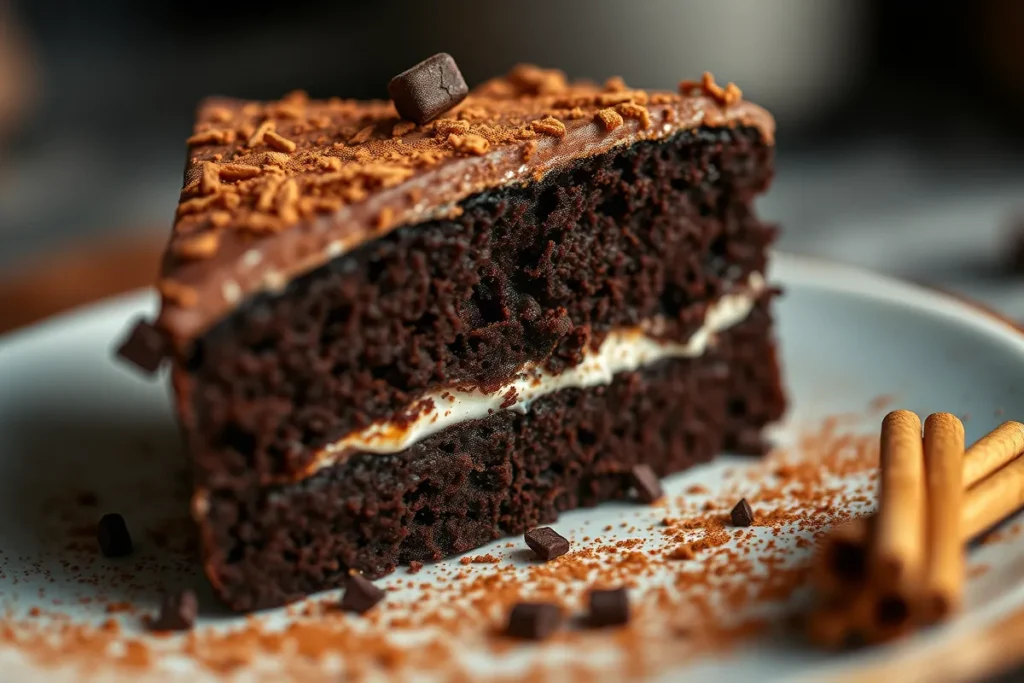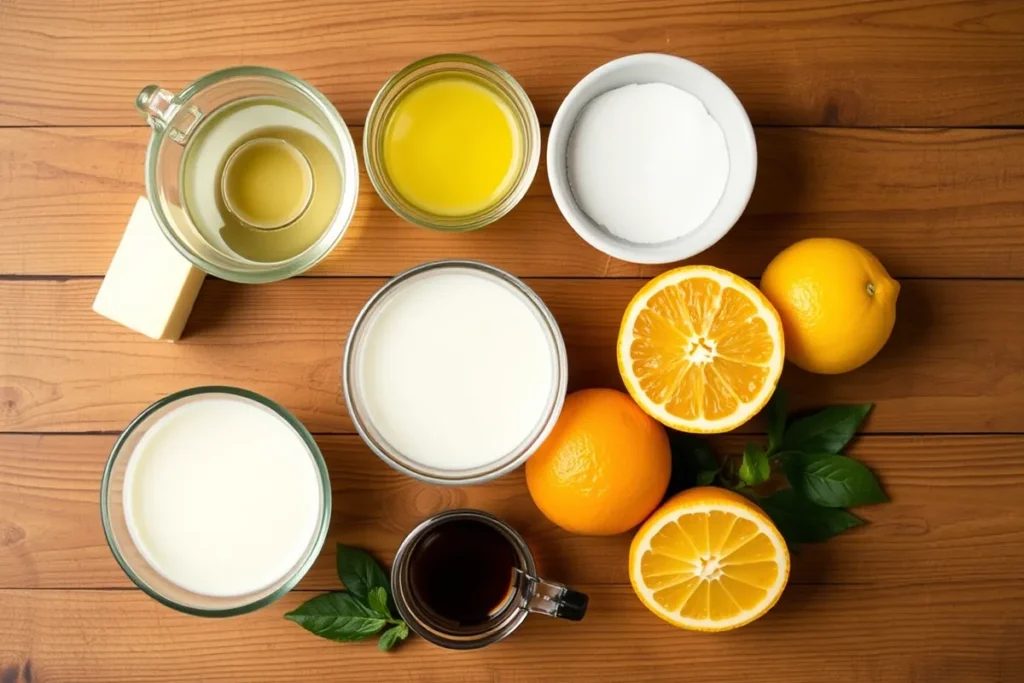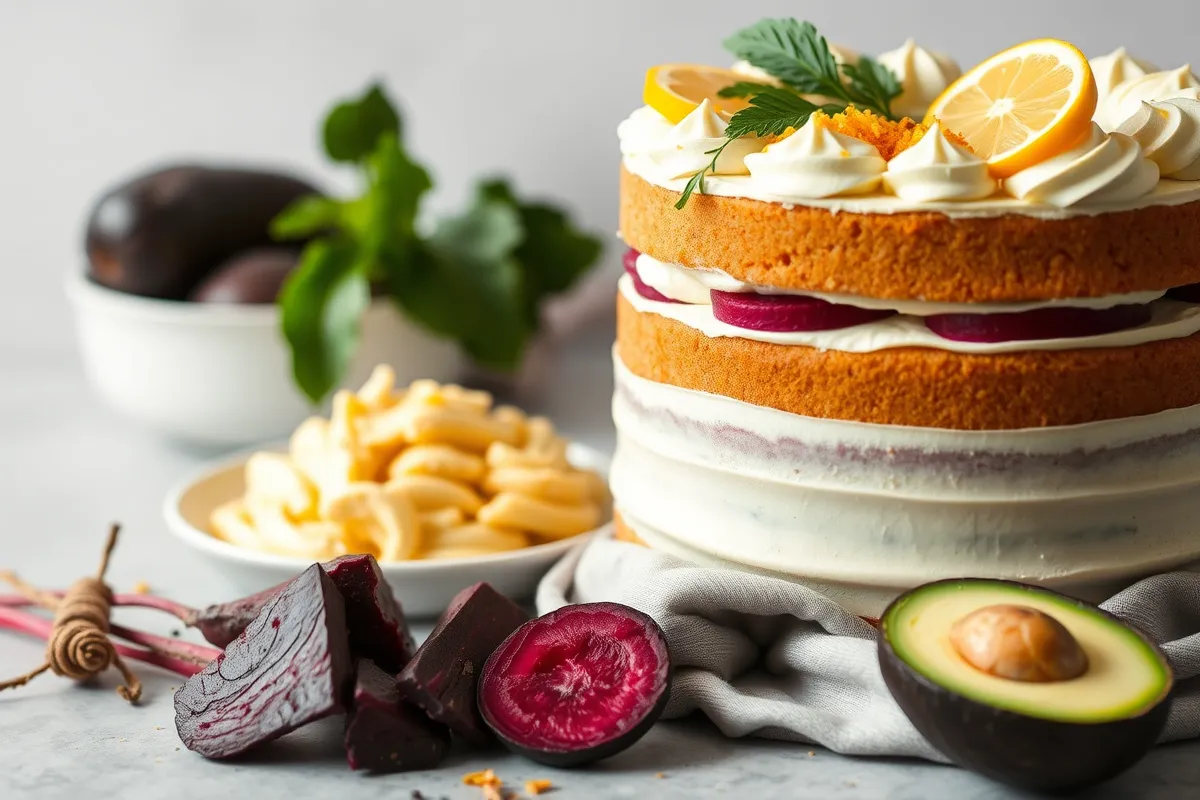Introduction to Secret Ingredients in Baking
Baking a cake is an exciting combination of art and science. While most recipes include standard components like flour, sugar, and eggs, the secret ingredients for cakes often hide in plain sight. These surprising additions can transform an ordinary cake into something truly exceptional.
For instance, adding unique ingredients can significantly improve a cake’s flavor, texture, and even its overall appearance. Whether you’re aiming for a moist crumb or a flavor boost, the right secret ingredient makes a difference. But what qualifies as a secret ingredient? It’s not just about being unconventional—it’s about creating harmony within your cake.
Moreover, experimenting with these hidden gems lets bakers infuse creativity into their recipes. By using the right combination of flavors and textures, every bite can feel like a delightful surprise. As you read further, you’ll discover exactly how these ingredients can turn your cakes into masterpieces.
The Science Behind Secret Ingredients
Understanding how a secret ingredient for cakes works begins with the science of baking. Every cake relies on a careful balance of ingredients like fats, sugars, and leavening agents. When a secret ingredient is added, it interacts with these basic components in fascinating ways.
For example, ingredients like buttermilk or sour cream introduce acidity to the batter. This acidity reacts with baking soda, creating carbon dioxide bubbles that help the cake rise. Similarly, moisture-rich options like applesauce or mayonnaise ensure a soft, tender crumb by adding hydration and fat.
Moreover, secret ingredients often enhance the structural integrity of the cake. Cornstarch, for instance, reduces the strength of flour proteins, resulting in a finer and more delicate texture. These interactions explain why even small additions can have a dramatic impact.
By understanding these effects, bakers can experiment confidently. Not only does this lead to better cakes, but it also encourages creativity in the kitchen—a true hallmark of skilled baking.
Top Secret Ingredients to Enhance Your Cakes
Dairy-Based Enhancers
Dairy products often play a starring role in creating moist and flavorful cakes. Some of the best secret ingredients for cakes come from the dairy aisle.
Buttermilk is a classic addition that provides a tangy flavor and extra moisture. Its acidity also reacts with baking soda, giving your cake a fluffy, light texture. Using buttermilk is an excellent choice for recipes like red velvet or chocolate cake.
Sour cream is another standout option. It makes cakes rich and tender while balancing sweetness with a subtle tang. Adding sour cream works particularly well in pound cakes or coffee cakes, where the dense structure benefits from this extra moisture.
Yogurt offers similar benefits and can often replace sour cream in recipes. For those seeking a healthier option, Greek yogurt adds protein while keeping the cake moist and soft. Its mild flavor complements both sweet and fruity cakes perfectly.
Unconventional Moisture Boosters
Sometimes, the most surprising ingredients yield the best results. Moisture is crucial for a good cake, and these secret ingredients can make all the difference.
Mayonnaise might sound unusual, but it’s a combination of eggs and oil, two essential cake ingredients. When added to chocolate cakes, it creates a velvety, tender crumb without overpowering the flavor.
Applesauce is another fantastic choice, especially for those looking to reduce fat in their recipes. It’s naturally sweet, adds moisture, and can even enhance fruity cakes like carrot or apple spice.
Sauerkraut is perhaps the most unconventional option on this list. While it’s often associated with savory dishes, it provides unexpected moisture and texture to chocolate cakes without leaving behind its distinct flavor.
Flavor Enhancers That Transform Cakes

Spices and Extracts
Adding spices or extracts can elevate a cake’s flavor profile, making it more complex and memorable. These are some secret ingredients for cakes that enhance taste while keeping the overall balance intact.
Cinnamon is a popular spice that brings warmth and depth, especially in apple, carrot, or pumpkin cakes. Just a teaspoon can create a comforting and aromatic experience.
Nutmeg and cloves are other spices that add richness to seasonal or holiday-themed cakes. They pair well with molasses, brown sugar, and other robust ingredients.
Vanilla extract is a must-have in many recipes, but upgrading to pure vanilla bean paste can add an intense flavor that makes a big difference. Similarly, almond extract can impart a subtle nutty undertone, perfect for white or vanilla cakes.
Coffee and Tea Infusions
For cakes that stand out, consider incorporating coffee or tea. These secret ingredients add unique and sophisticated notes that work well in both chocolate and vanilla bases.
Espresso powder is a fantastic addition to chocolate cakes. It enhances the chocolate flavor, making it richer and more pronounced without adding a strong coffee taste.
Earl Grey tea or chai spice blends can be brewed into milk or added directly to batters, lending subtle floral or spiced notes. These work particularly well in sponge cakes or layer cakes with creamy fillings.
Texture Modifiers to Elevate Your Cakes
Cornstarch for a Finer Crumb
Texture plays a significant role in how enjoyable a cake is to eat. One secret ingredient for cakes that is often overlooked is cornstarch. This fine powder softens the flour’s gluten structure, resulting in a cake with a more delicate and tender crumb.
When mixed with flour, cornstarch creates a lighter texture that is perfect for cakes like chiffon or angel food, which rely on an airy consistency. It also helps cakes retain their moisture without becoming too dense or heavy.
Instant Pudding Mix for Moisture and Density
Another texture-enhancing secret ingredient is instant pudding mix. While it’s often used in cakes like boxed mixes, adding it to homemade batters brings significant benefits. Instant pudding mix contains starches that help the cake retain moisture and stay soft for longer periods.
Beyond moisture, it also thickens the batter, which can lead to a denser cake that holds up well when layered with frosting or fillings. For a more decadent dessert, consider using chocolate or vanilla pudding mix in your cake recipes.
Mashed Potatoes for a Dense, Moist Cake
If you’re looking for a truly unique secret ingredient, mashed potatoes are an excellent choice. Although it may sound unusual, mashed potatoes add moisture and a dense, yet soft texture to cakes. This ingredient works best in spice cakes, where the rich flavors can complement the creamy texture.
Mashed potatoes also prevent the cake from drying out, making it an ideal option for cakes that are meant to be served over a few days, such as birthday cakes or wedding cakes.
Unexpected Secret Ingredients for Cakes
Avocado as a Butter Substitute
In recent years, avocado has emerged as a trendy ingredient in many baking recipes. As a natural fat, it provides a creamy texture and moisture without relying on traditional fats like butter or oil.
Using avocado in your cakes offers a healthier option that still results in a rich, moist crumb. It works well in chocolate cakes, where its mild flavor is easily masked by the cocoa. It also provides a subtle richness in vanilla or citrus-based cakes.
Beets for Natural Sweetness
Another secret ingredient for cakes that may surprise you is beets. Not only do beets add vibrant color to cakes, but they also offer natural sweetness, allowing bakers to reduce added sugar. This is particularly useful in chocolate cakes, where beets enhance the cake’s flavor while keeping it moist and tender.
Beets pair well with earthy flavors like cinnamon and ginger, making them an excellent addition to spiced cakes. When pureed and mixed into the batter, beets create a rich texture that complements both the sweetness and the moisture of the cake.
Zucchini for Moisture and Lightness
Incorporating zucchini into your cake might seem unusual, but this vegetable is an excellent way to add moisture while keeping the cake light and airy. Zucchini adds no strong flavor but enhances the texture, creating a cake that is both moist and fluffy.
Zucchini works especially well in cakes like zucchini bread, but it can also be used in chocolate cakes to improve moisture without altering the flavor. The water content in zucchini prevents the cake from becoming dry, resulting in a cake that stays fresh for longer.
The Role of Acidic Ingredients in Cake Recipes

Why Acidity Works Wonders
Acidic ingredients play a key role in many cakes by reacting with leavening agents like baking soda or baking powder. These reactions release carbon dioxide, which makes the cake rise, creating a light, airy texture. Understanding how acidity interacts with other ingredients can help bakers choose the right secret ingredient for cakes.
Buttermilk is one of the most common acidic ingredients in cake recipes. Its acidity not only helps the cake rise but also adds a subtle tanginess that complements the sweetness. This makes buttermilk especially useful in cakes like red velvet, where the balance of flavors is key.
Vinegar is another acidic ingredient that works similarly to buttermilk. A small amount of vinegar can activate the baking soda, giving the cake a soft texture. It’s often used in chocolate cakes to enhance the cocoa flavor and create a lighter, fluffier crumb.
The Magic of Citrus
Adding citrus juice or zest is another way to introduce acidity into your cake while boosting flavor. Lemon, lime, or orange zest adds bright, aromatic notes, while the juice enhances the cake’s moisture. Citrus works wonderfully in pound cakes, sponges, and even chocolate cakes, providing a refreshing contrast to the richness of other ingredients.
The natural acidity in citrus fruits also strengthens the cake’s structure and texture, making it easier for the cake to hold its shape without becoming overly dense. For cakes that need a little extra lift or flavor complexity, citrus zest is a perfect secret ingredient.
How to Incorporate Secret Ingredients into Your Cake Recipes
Balancing Flavors and Textures
When adding secret ingredients to cakes, it’s essential to strike the right balance. The focus should always be on enhancing the flavor and texture without overpowering the cake’s primary taste. Start by choosing one or two secret ingredients that complement the existing flavors in your recipe.
For example, if you’re making a rich chocolate cake, you might consider adding a hint of espresso powder or some sour cream for moisture. However, be mindful not to overload the cake with too many ingredients, as this can interfere with the desired result.
Remember, subtlety is key. Secret ingredients should enhance the cake without stealing the show. The goal is to surprise your guests with an unexpected layer of flavor or texture that keeps them guessing.
Substituting Ingredients
In some cases, you may want to substitute a traditional ingredient with a secret one. For example, if your recipe calls for butter, try swapping it out with avocado or sour cream for a unique twist. If you’re aiming for a healthier option, consider using applesauce in place of oil to reduce fat while keeping the cake moist.
When making substitutions, be sure to adjust other ingredients to maintain the proper texture. For instance, using avocado as a fat replacement may result in a denser cake, so you might need to add a little extra leavening to ensure the cake rises properly.
Experimenting with Proportions
Secret ingredients work best when used in the right proportions. It’s important to follow your recipe closely while making small adjustments. A general guideline is to replace no more than 25% of the core ingredients with secret ones to maintain the cake’s integrity.
If you’re using a particularly strong-flavored ingredient, like beets or vinegar, start with a small amount and gradually increase it until you find the perfect balance. You can always tweak the flavor and texture with small additions or substitutions during the baking process.
Discover More cakes in Our Dessert Category like The Chocolate Fudge Icebox Cake and The Blackberry Cheesecake.
Conclusion: The Potential of Secret Ingredients For Cakes
Baking is as much about science as it is about creativity. The use of secret ingredients can elevate an ordinary cake into something extraordinary by enhancing flavor, texture, and moisture. Whether it’s the tangy lift of buttermilk, the rich tenderness from mayonnaise, or the unexpected sweetness from beets, the right ingredient can make all the difference.
The key to successful baking lies in understanding how these secret ingredients work and how they interact with other components in the recipe. Once you become familiar with the effects, you can confidently experiment with various ingredients to create cakes that stand out.
From dairy and vegetables to spices and unconventional additions, there’s no shortage of options to explore. The best cakes often come from a combination of classic ingredients with innovative twists. By introducing these secret ingredients, you can take your baking to the next level, delighting your friends and family with cakes that are both delicious and unique.

